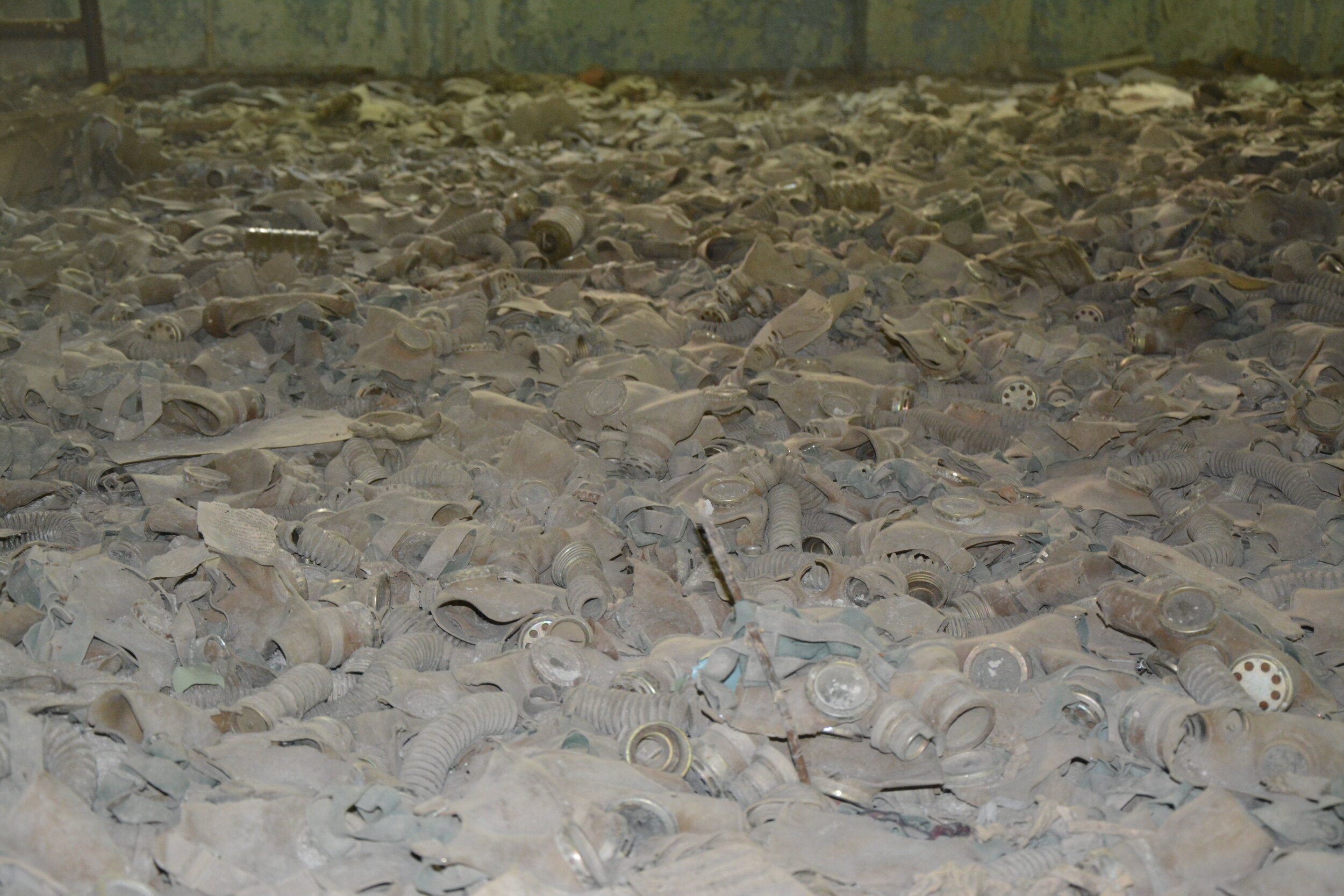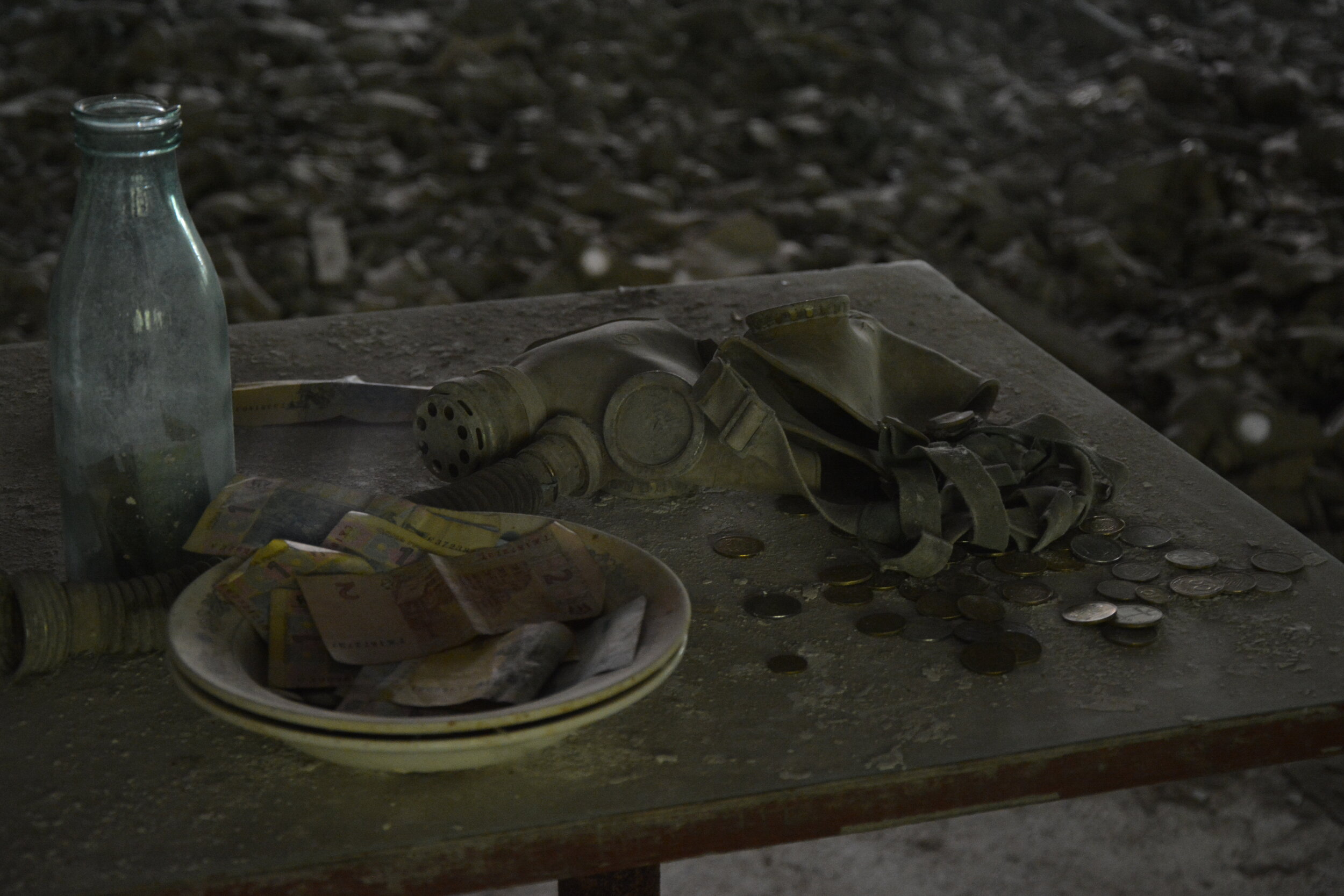
The Exclusion Zone. Reactor #4. The Dead City of Pripyat.
My first glimpse into the world left behind by the 1986 Chornobyl disaster came from The Vice Guide to Travel in 2007. I was captivated by the history of the events that led to the meltdown, but even more enthralled by what had been left behind. In late 2019, I had the chance to visit the site myself.
This is what I found.
-
The cities surrounding the reactor were ordered to evacuate en masse, only days after the explosion. A fleet of buses arrived without warning. The residents, once full of hope for their futures in the forested northwest of Ukraine, had only minutes to decide what to take and what to leave behind. Looking now into their mutilated homes, I ask myself: how much of one’s life can fit into a single suitcase?
But for these people, there was no time to ponder an answer. The question was swallowed whole by urgency, and their choices made in haste and desperation.
Panic moved like a second wind through the narrow halls and thin walls of their homes, channeled through the voices on loudspeakers outside.
Yet further away—beyond sight or sound—an invisible fire was raging.
Its message was silent then, but will later crackle through dosimeter devices for thousands of years. During the initial hours and days after the disaster, this technology was deliberately withheld from soldiers and citizens alike.
They did not know what they breathed in. They did not know what pierced their boides with every gust of wind. Those in “control” kept the danger hidden—for panic could kill in an hour what radiation might kill in a year.
Still, one message was clear to all who were present in the zone around the burning reactor… This was an unspoken truth that needed no language, nor did it require the forceful shout of a Soviet soldier to be heard. This message rang out that week like a cold steel bell:
There was no time for lethargy.
Many of those evacuated believed they would return within a month and packed accordingly. But it is now known that twenty thousand years must pass before human settlement can safely resume. Months after the evacuation, a concrete sarcophagus was built to keep death from slithering out of the ruins. The buildings surrounding the reactor for miles were sprayed with a special solution to prevent radioactive dust from drifting into the European winds and poisoning a continent. Belongings left behind were burned or buried. Eventually, there arrived a reluctant acceptance that those who once lived here would remain forever exiled from the thousand-square-mile exclusion zone.
-
Most images I had seen of Chernobyl showed winter—ashen branches, grey skies, and a stillness soaked in snow. But my visit took place in the waning days of summer in 2019. What I found, arriving in a fifteen-seat tour bus, was instead green. Overflowing green.
Lush wilds spilled through the cracks of the concrete we walked on. Beyond the streets and sidewalks, vegetation climbed over building foundations, as if to soak up the worst of humanity’s misdeeds. I watched from afar as dogs, birds, and deer wandered freely along miles of broken roadways. I listened to the pitter-patter of animals moving through the woods beyond me.
My tour guide noticed as i shifted my head and perked my ears as I peered into the forest, though I dared not take another step closer, lest my Geiger counter scream to life. She followed my gaze and told me that even in that forbidden place—the Red Forest—endangered animal species of Europe have found safe haven. Beyond the species that we had witnessed throughout the day, she told me that even bears now roam through these hollowed-out remains of human achievement.
Bordering these corridors, once so busy with machines and now supplanted with life, cars and gas stations sit silent and idle. The roads they once served are now slowly ground back into dust by simple time and callous indifference.
The apartments and homes I walked through were ransacked long ago by trespassers—known simply as stalkers. The name suits them well. Interlopers… haunting this dystopian ruin where science fiction and reality bleed into one another, becoming inextricably linked.
The carcasses of the structures they tread now lie dissected and abandoned, left to rot in the silence of evacuation. Only the brave—or the reckless—dare stray from the path to explore them. Inside, trees split walls and tilt stairwells, painting the cinder-gray concrete with bursts of green. Life thrives now even where our poison still lingers. So much of the city has already been reclaimed, and with each passing day, the smallest traces of habitation are called back to the earth, speck by speck.
-
The reason this place fascinates so many, I think, is because it answers a question we rarely allow ourselves to ask: what would happen if humanity simply disappeared? What evidence would remain that we ever existed? What would become of the homes we spent so much time and effort building up and caring for? What of our workplaces, our shopping centers? Our favorite bars and restaurants?
Standing in the center of the zone, it's clear that beneath the shadow of disaster, and through the breakdown of an ordered society, all the marvels of our ingenuity could one day be swallowed whole by the natural world.
What is genuinely haunting… is how little time it takes.
“For out of it you were taken; for you are dust, and to dust you shall return.”




















